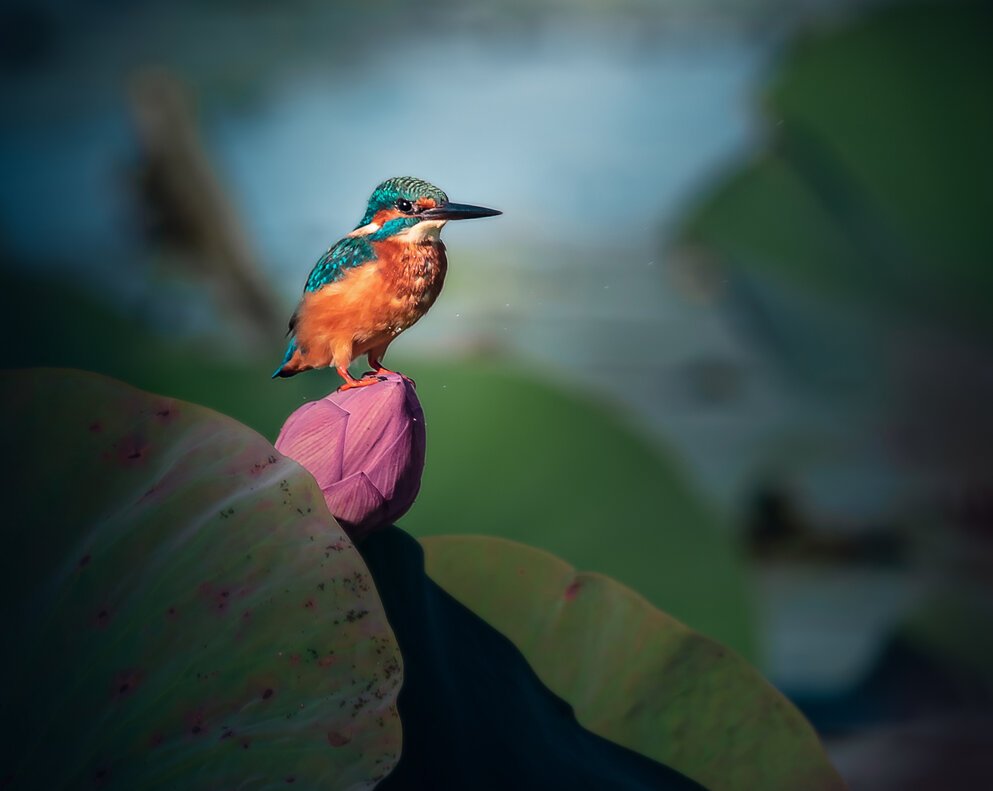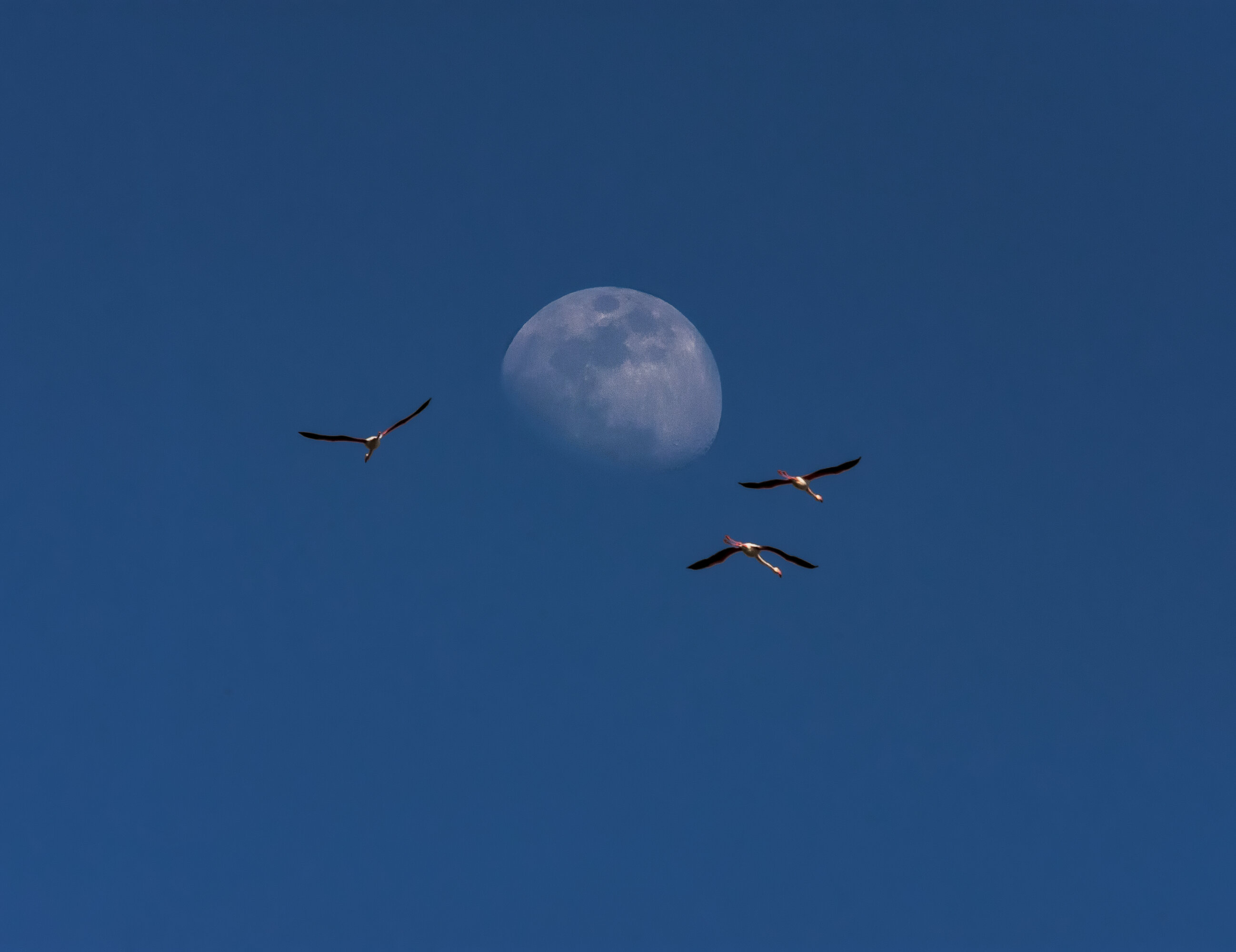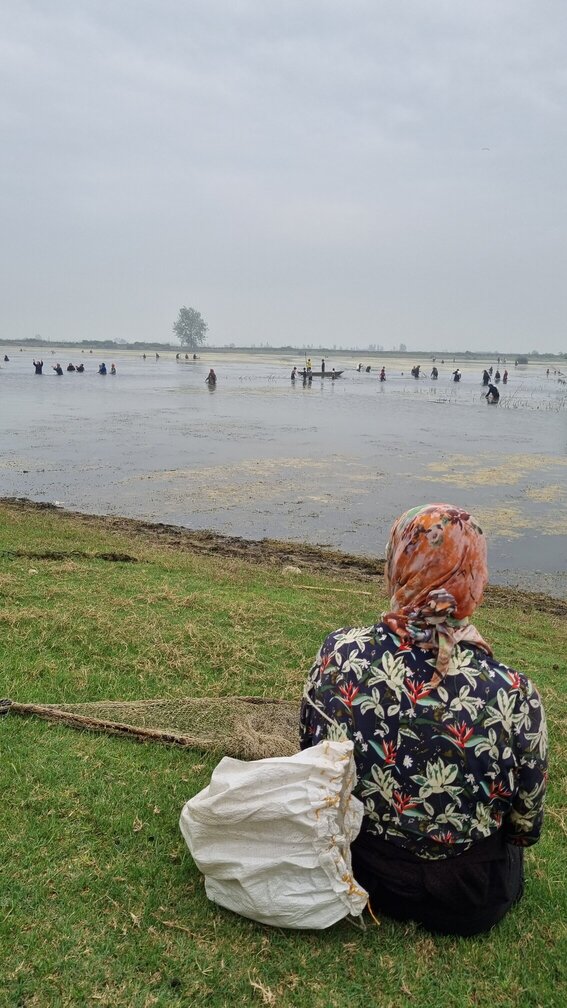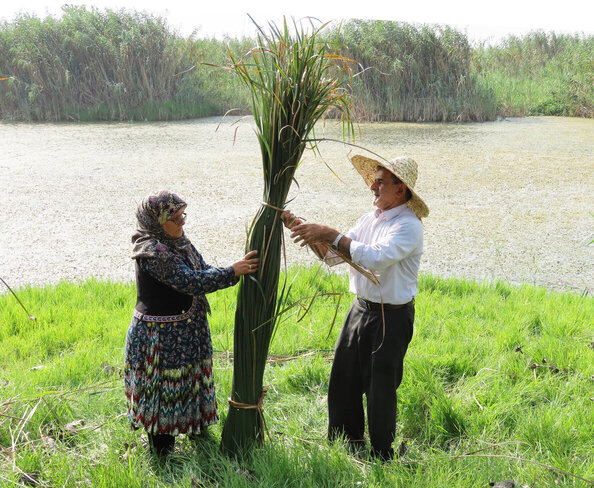Safeguarding Iran’s wetlands through culture-based solutions
Non-abandonment of the ab-bandaans
February 19, 2023

Local shepherd in Langoor ab-bandaan
برای خواندن متن به فارسی اینجا کلیک کنید
Ab-bandaans, a type of wetland, are one of the most important ecosystems in Iran. These wetlandsserve as vital environments for the protection of biodiversity, indigenous culture, and related environmental and economic functions.
In Northern Iran, these distinct wetland sites have been managed based on traditional knowledge for centuries. Currently, 2,208 ab-bandaans cover a total area of 32,000 hectares.
These sites take on a special significance because Iran was the site for the negotiation and signing, in 1971, of the Convention on Wetlands (formally known as the Ramsar Convention on Wetlands of International Importance Especially as Waterfowl Habitat).
For centuries, Iran’s local communities have relied on ab-bandaans for their livelihoods, primarily in the domains of agricultural production and fishing.
Wherever land meets water, life abounds. Wetlands are the arteries and veins of the landscape.
Owing to their long tenure, traditional conservation mechanisms are well established for the safeguarding of these critical ecosystems, including protocols for sustainable use under varying climatic conditions.
“Our agricultural lands are dependent on ab-bandans like an infant is dependent on its mother.”
Reza Rahimi, a 90-year-old ‘Mir-Ab’ (traditional wetlands manager) and expert weaver from Bosra Village
Traditional knowledge serves #GenerationRestoration
Despite their importance, Iran’s ab-bandaans have limited documentation and historical records. Traditional conservation methods have been overlooked, and over time, these key wetland ecosystems have been drained or otherwise converted into agricultural lands and fish farms. This heedlessness gives rise to fertilizer runoff, toxic waste pollution, and the presence of invasive species – all of which conspire to foment ecosystem collapse in ab-bandaans.
Consequently, the livelihoods of local communities and the existence of their conservation culture and knowledge are at risk. Moreover, the habitat of nearly 700,000 migratory birds is deteriorating, while drought and pollution in water resources are increasing and conflicts amongst multi-level actors are intensifying.
In this context, over 4,500 community members from the villages of Ramnet and Aghuzben partnered with the Small Grants Programme in 2019, through the Global Support Initiative to territories and areas conserved by indigenous peoples and local communities (ICCA-GSI) on a project to document wetlands biodiversity, traditional conservation knowledge and practices, and the factors leading to biodiversity loss.
The project sites are spread across 20 villages in wider Babol City, located in Iran’s northern province of Mazandaran.
Taking stock
From 2020 to 2021, a scoping study was undertaken in the ab-bandaans of nine villages in Babol City. In the aggregate, these areas comprise about 2,000 hectares of wetland ecosystems, harbouring a total of 219 identified animal species that are reliant on the habitat’s life-giving services. Over 20 varieties of fish, which accounted for 10% of the total number of species found, play an important role for community livelihoods, especially during the COVID-19 pandemic and the economic crisis it brought on.

Unique biodiversity abounds in Bosra ab-bandaan
“For the first time, the complete information of 16 natural ab-bandaans have been collected and a data bank has been developed.”
“Mr. Heidarpour, Head of Department of Environment of Babol”
The scoping exercise also uncovered deforestation around the ab-bandaans and identified it as a serious threat, including via losses to 17 species of native trees in surrounding forests. In an effort to better catalogue these vital ecosystems and provide an evidence base for future policy, a data bank for 16 ab-bandaans in the nine villages has been established.

Skyview of Babol City, Iran
Nature-based solutions #ForPeopleForPlanet
Based on the findings of the ab-bandaan scoping study, the communities identified nature-based solutions based on traditional knowledge.
Deep roots, new shoots
In 2020, 150 community members from six villages were trained on the restoration and recovery of indigenous conservation methods, specifically around the reintroduction of 17 types of native trees to replace the status quo of plantation forests with non-native species. Through 2021, participants planted 3,000 native trees around the most severely deforested wetlands and fisheries, enhancing livelihoods via sustainable silviculture, and increasing fish stocks through shading and improved aquatic habitats.
"From this ICCA-GSI project, I learned the importance of dialogue and hope for change. It has changed my perspective and now, I think development and income (generation) can go hand in hand with nature conservation. My future plan is to try to show our ab-bandaans as a good model of use and conservation.”
Hadi Rezanejad Nejati, a 38-year-old native of the village of Siyah Kola, East Babol City
Reviving traditional practices, empowering women
Traditional practices in handicraft making were also re-introduced to revive cultural identity, empower women, and diversify the communities’ livelihoods in environmentally friendly ways.

Active participation of women in Qoroq Shekani and conservation of ab-bandaans
In Iran, handicraft making has declined precipitously as industrialized products - largely imported - have become more popular. Through the project, women were trained in using traditional weaving techniques using the native bulrush plant to make underlays for carpets and floor mats, and, using the native gale plant (a Sparganium erectum species) to make bags, baskets, and mats.

Local community members collecting native bulrush plant for weaving baskets
Many of these women were unemployed due to the expansion of industrialized agricultural, and have since reported significant boosts to earnings. This project has helped restore ab-bandaan in the literal sense, as well as returning them to their place as a source of pride and livelihoods among the local communities.
Changing perceptions, educating for change
“This project has changed our view towards the nature around us – the eminence of its role became clearer and inspired us to organize our local community to take action.”
Reza Khanjani, a 53-year-old native of the village of Aghuzben and member of the Wetlands Board of Trustees
From 2021 to 2022, over 30 workshops and campaigns across Babol City were held by the project to promote ab-bandaan conservation, reaching more than 5,000 people including government authorities and civil society.
Inspired by local community action and outreach, the Provincial Department of Environment organized an environmental campaign for the first time in April 2022.
Through these efforts, agreements now exist on collaborative multi-level efforts on good governance and sustainable management of these important wetlands.
UNDP’s intervention intends to provide catalytic support by strategically demonstrating integrated natural resources management and ecosystem base-adaptation in pilot areas and it is expected to ultimately achieve area-based integrated natural resources management and local sustainable development for resilience.

 Locations
Locations